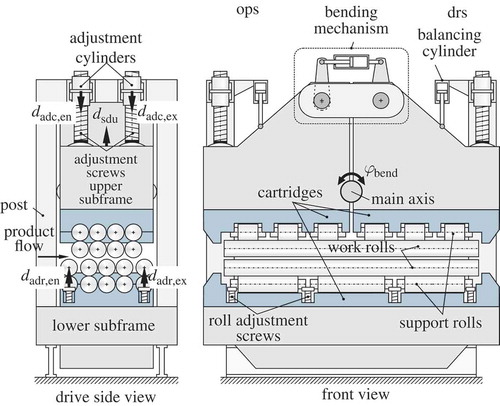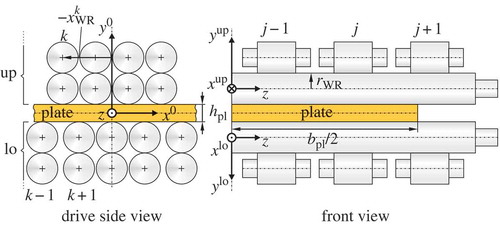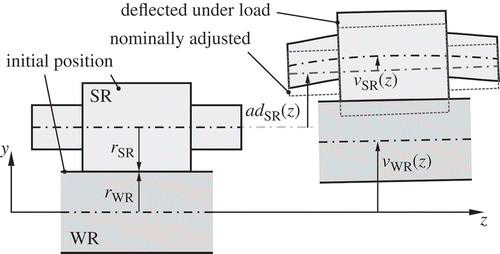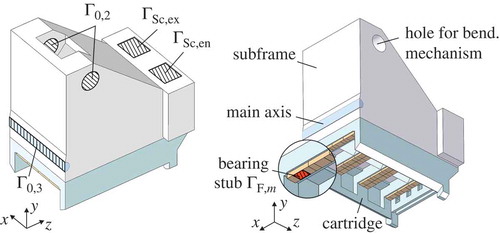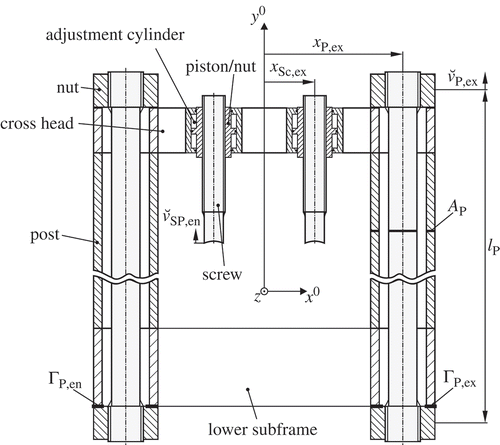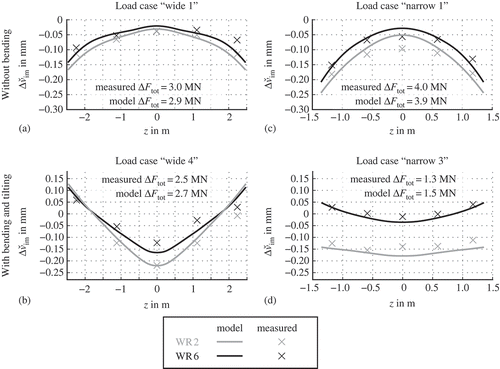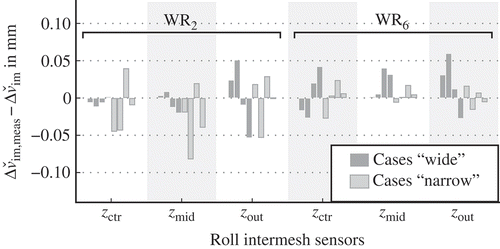Figures & data
Figure 3. Top: configuration of work and support rolls. Bottom: line loads and approximated concentrated forces acting on the work roll with simplified geometry.
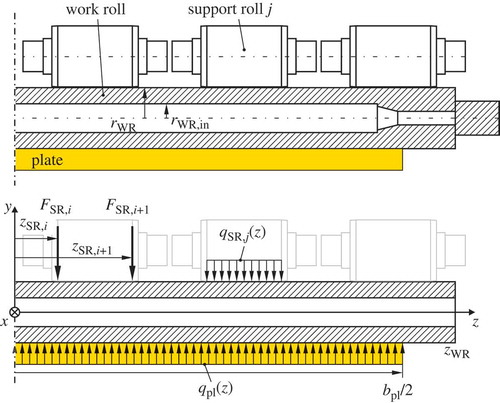
Figure 5. Nonconforming contact under load and typical force–deflection characteristic of the real machine, cf. [Citation16].
![Figure 5. Nonconforming contact under load and typical force–deflection characteristic of the real machine, cf. [Citation16].](/cms/asset/13ee6ccb-9d16-4af2-9be0-77a62e1e21fa/nmcm_a_941881_f0005_b.gif)
Figure 8. Normalized deflection contributions of the parts of the leveller frames to the deflection of the support roll edges.
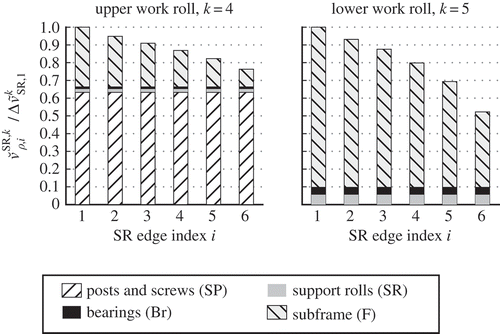
Figure 10. Principle of the deflection measurement with forceless supports inserted into a test plate.

Figure 12. Wide test plate with the sensor placements relative to the work and support roll locations.
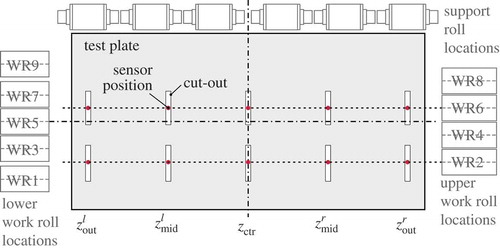
Figure 14. Measured roll intermesh for selected rolls over the mean adjustment and the measured total load force for the large test plate.
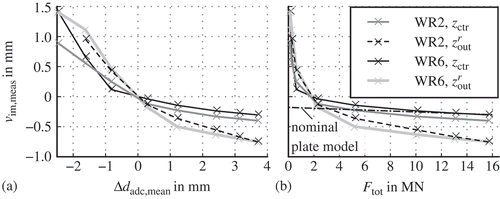
Table 1. List of load cases.

